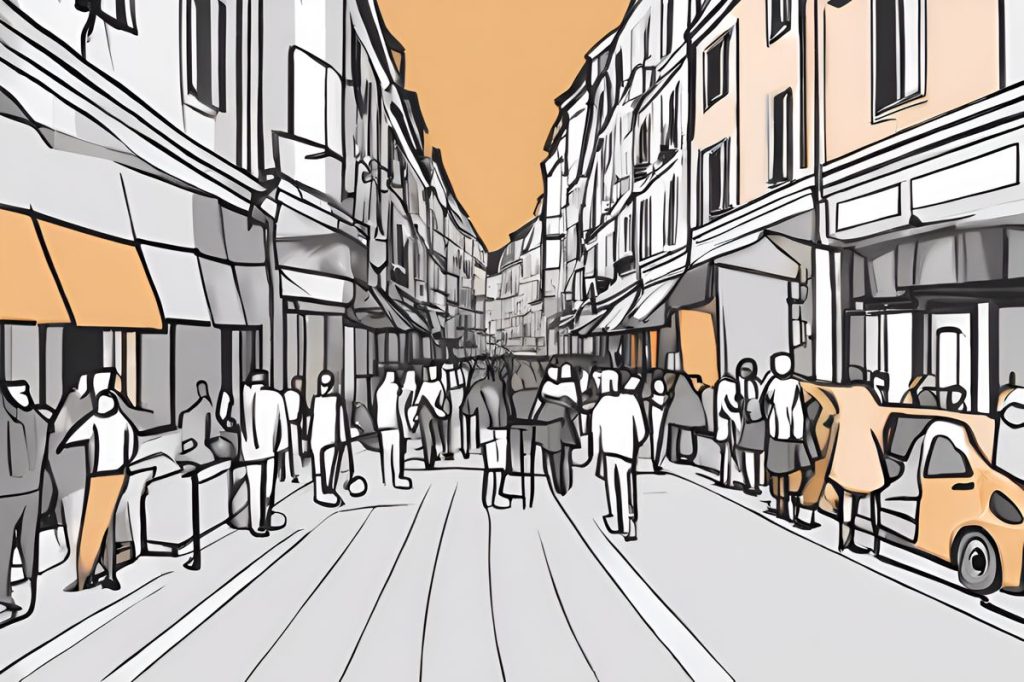The EU grapples with a backlog of over 14,000 asylum applications from Syrian nationals, while debates over the establishment of ‘safe zones’ in Syria continue to shape repatriation discussions. Striking a balance between supporting refugees and navigating geopolitical concerns remains crucial as efforts focus on voluntary, dignified returns with UNHCR monitoring and international support.
What are the challenges facing Syrian asylum-seekers in the EU?
- The EU faces a backlog of over 14,000 pending asylum applications from Syrians.
- Debates persist about establishing ‘safe zones’ in Syria for possible returns.
- Striking a balance between supporting refugees and navigating geopolitical concerns is crucial.
- The EU emphasizes voluntary, dignified returns with UNHCR monitoring and international support.
The Growing Backlog
Amidst the bustling streets and the Mediterranean charm, an underlying challenge persists. As of a recent announcement, there are over 14,000 pending asylum-seeker applications from Syrian nationals—a number that has caused a stir within European Union circles. The UNHCR confirmed this figure, shedding light on the daunting task ahead for those seeking refuge. The European Commissioner for Home Affairs, Ylva Johansson, addressed the issue, acknowledging the strain on Cyprus due to regional tensions.
Despite the Commissioner’s recognition of the challenges, she emphasized the need for cooperation with member states, particularly through the Agency for Asylum. The current situation suggests the island nation is grappling with an unprecedented backlog, one that has drawn attention to the broader complexities of migration and asylum in the EU.
The Debate over ‘Safe Zones’
The Cypriot government, in an effort to manage the influx, has been advocating for the EU to recognize parts of Syria as safe. This would potentially allow for the return of some Syrians to their homeland. However, officials at the UNHCR have voiced concerns, pointing out that currently, there are no regions in Syria that could be deemed as safe zones. This stance is critical, as it influences the EU’s decisions on the repatriation of refugees.
In a candid statement to the Security Council, UN Special Envoy Geir Pedersen painted a grim picture of Syria’s state, highlighting the ongoing conflict and the potential for regional spillover. Pedersen’s remarks serve as a reminder of the delicate balance host countries have to maintain—supporting and protecting refugees while navigating the geopolitical landscape.
Striking a Balance
The discussion around the return of Syrian nationals is fraught with complexity. Johansson has noted the ongoing dialogues with UN agencies to evolve a more structured approach to voluntary returns. These efforts focus on regions that can be considered safe, ensuring that such returns are dignified, informed, and coupled with protective measures.
For Syrians who do choose to return, Johansson underlines the importance of UNHCR’s independent monitoring in Syria. This is to ensure that the returns are not only voluntary but also that the returnees will have the necessary support from the international community, encompassing humanitarian aid and recovery programs.
Looking Forward
As the international community deliberates on the best course of action, the plight of these asylum-seekers hangs in the balance. The emphasis is on providing support to host countries like Cyprus while ensuring the safety and dignity of the refugees. The situation calls for a nuanced approach—one that respects the rights of individuals seeking asylum and the sovereignty of nations shouldering the responsibility of hosting them. It is a delicate dance of diplomacy, humanity, and pragmatism that will ultimately shape the future for many Syrian nationals looking for a place to call home.
What are the challenges facing Syrian asylum-seekers in the EU?
- The EU faces a backlog of over 14,000 pending asylum applications from Syrians.
- Debates persist about establishing ‘safe zones’ in Syria for possible returns.
- Striking a balance between supporting refugees and navigating geopolitical concerns is crucial.
- The EU emphasizes voluntary, dignified returns with UNHCR monitoring and international support.
How many pending asylum applications from Syrian nationals are there in the EU?
There are over 14,000 pending asylum applications from Syrian nationals in the EU.
What is the current stance on establishing ‘safe zones’ in Syria for potential returns?
The Cypriot government has been advocating for the EU to recognize parts of Syria as safe for potential returns, but officials at the UNHCR have voiced concerns, stating that there are currently no regions in Syria that could be deemed as safe zones.
How are voluntary returns of Syrian asylum-seekers being handled in the EU?
Efforts are being made to ensure voluntary returns are dignified, informed, and supported by protective measures. The EU is working with UN agencies to establish a structured approach, with a focus on regions considered safe for returns. UNHCR’s independent monitoring in Syria is crucial to ensuring the voluntary nature of returns and providing necessary support from the international community.

